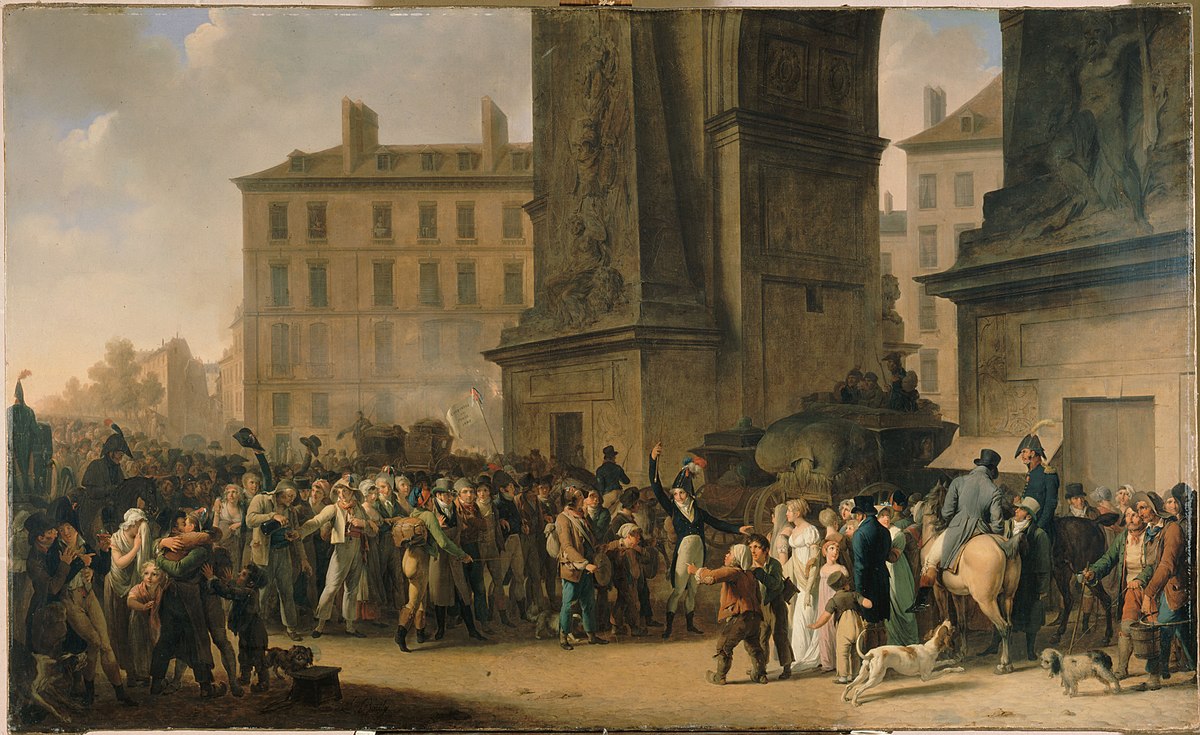
1793 Aug 23
Levée en masse
Paris, FranceIn response to this desperate situation, at war with European states, and insurrection, Paris petitioners and the fédérés demanded that the Convention enact a levée en masse. In response, Convention member Bertrand Barère asked the Convention to "decree the solemn declaration that the French people was going to rise as a whole for the defense of its independence". The Convention fulfilled Barere's request on 16 August, when they stated that the levée en masse would be enacted.
All unmarried able-bodied men between 18 and 25 were requisitioned with immediate effect for military service. This significantly increased the number of men in the army, reaching a peak of about 1,500,000 in September 1794, although the actual fighting strength probably peaked at no more than 800,000.
For all the rhetoric, the levée en masse was not popular; desertion and evasion were high. However, the effort was sufficient to turn the tide of the war, and there was no need for any further conscription until 1797, when a more permanent system of annual intakes was instituted.
Its main result, protecting French borders against all enemies, surprised and shocked Europe. The levée en masse was also effective in that by putting on the field many men, even untrained, it required France's opponents to man all fortresses and expand their own standing armies, far beyond their capacity to pay professional soldiers.
▲
●
